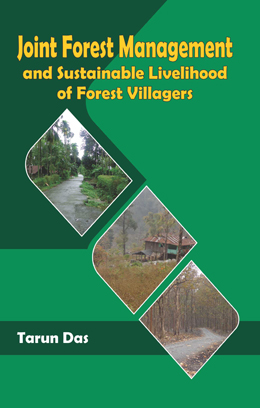
ISBN : 978-93-91139-88-9
Edition : Hard Bound
Categories : Geography
Delivered 2-5 Business Days
Easy Returns and Replacement
Payment Options : (Credit Card , Debit Card , Net Banking)
The Book
In this book, a critical discussion of JFM and its impact on socio-economic perspective of forest villagers’ have been made based on the information collected from the field observation. This writings may give an idea about the forest and forest resource utilization i.e collection of NTFPs, role of JFM activities, development of villagers and their perception on problems with JFM projects. Despite, suggestions are given to eradicate the problems and to get further success of the projects. However, the entire book is grouped into 7 chapters to discuss real situation of JFM projects prevailing in Alipurduar and Jalpaiguri district.
In chapter 1, author describes about the origin of JFM, its status in India & West Bengal, forest villages, forest policy of India, key issues & supporting activities of JFM, objective, methodology and sources of data as well as other schedules.
Chapter 2 contains details of geographical setting of the Alipurduar & Jalpaiguri District with details of administrative setup, demography, forest and its administrative setup of forest divisions, JFM in West Bengal, JFM-Support activities.
Chapter 3 Here, demographic character like ethnic composition, dominant tribal group, occupational pattern, JFM activities in the studied villages have been depicted diligently.
In the chapter 4, author explains about livelihood activities of JFM of respondents villages. Sustainable activities of FPCs and EDCs, activity of JFM project, participation and expectation in forest management have been described.
Chapter 5 gives details about perception of villagers’ as well as environment related issues i.e. awareness of meeting, perception in skill development programme, awareness of micro planning, livelihood intervention of NTFPs collection.
In chapter 6 effort has been made to explain about different sorts of sustainability issues which are raised by respondents such as on JFM activities, its loopholes, villagers’ performances and interest about JFM programme etc.
Chapter 7, which is conclusion, where observations have been critically assessed and suggestions are given. These suggestions might be helpful to the social workers, planners, forest personnel and others who are associated with the works of sustainable development of forest and environment.
| Weight | 0.500 Gm. |
|---|---|
| Year | 2024 |
| Pages | 240 |
| Edition | Hard Bound |
| Author Name | Tarun Das |
| About the Authors | Dr. Tarun Das, born in 1979 at Uttar Dinajpur, West Bengal. Dr. Das received his school education from native place and had his B.A (Hons) in Geography (1998) from Siliguri College, WB & passed M.A/ M. Sc in Geography (2000-01) from the Department of Geography and Applied Geography, University of North Bengal and received B. Ed degree from Govt. Teachers’ Training College, Malda, WB. He has been awarded Ph. D from the Department of Geography & Applied Geography, University of North Bengal. Dr. Das presently engaged as an Assistant Professor in the Department of Geography, Siliguri College, Siliguri, Darjeeling, WB. He was also appointed as an Assistant Professor in the Department of Geography, Birpara College, Alipurduar, WB from 2010-2017. Despite, once he was teaching in school education since 2002. He edited two books, ‘Population, Urbanisation and Changing State of Environment,’ in 2014 and ‘Human interventions: Present and Future State of Environment’ in 2016. He has written a book entitled ‘Forest and Forest Villagers’ in 2022. His main focus is on Environmental issues, Urbanisation and Population problems, Regional Planning and Sustainable Development. He has contributed several research articles on these areas which have been published in edited books, reputed national and international journals, also presented many research papers in national and international Seminars/ Conferences on it. Furthermore, presently he is supervising PhD scholars of the Department of Geography and Applied Geography, University of North Bengal. |